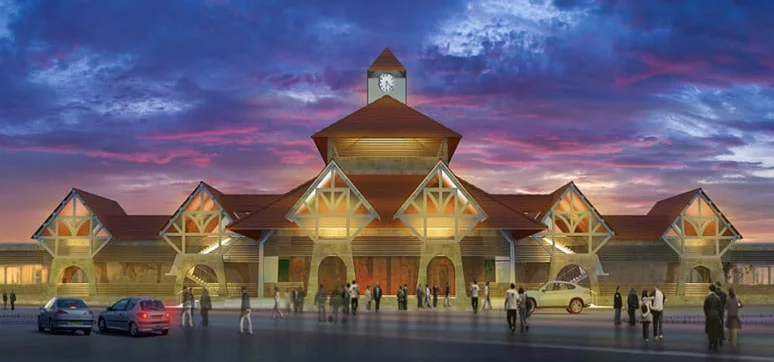The manufacturing industry is building back fast post lockdown; so are façade and fenestration industries, undismayed by significant labor and supply chain challenges, raw material price variations, and reduced margins. To maintain the momentum, manufacturers should navigate elevated risks while advancing sustainability priorities. We interacted with many industrialists and influencers to understand the present market situation and to know their outlooks and hopes for the decade. We also discussed manufacturing industry trends that can help capture growth and meet the rising demands.
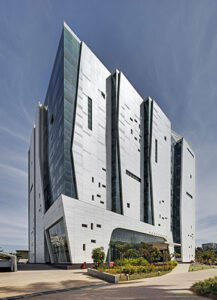
Optimism around revenue growth found in 2019 was held in check by the pandemic 2020. Labor shortages and supply chain instability were reducing operational efficiency and margins, which is still a problem. Another shortfall was seen in skilled manpower, which is affecting productivity. A report by Deloitte, one of the top global consultancy firms, points out that last year they estimated a shortfall of 2.1 million skilled jobs by 2030. “To attract and retain talent, manufacturers should pair strategies such as reskilling with a recasting of their employment brand. Shrinking the industry’s public perception gap by making manufacturing jobs a more desirable entry point could be critical to meeting hiring needs in 2022. Engagement with a wider talent ecosystem of partners to reach diverse, skilled talent pools can help offset the recent wave of retirements and voluntary exits,” infers the report.
Manufacturers are looking to capture growth and protect long-term profitability. To achieve this, the companies should embrace digital capabilities from corporate functions to the factory floor. More organizations are making progress with digitalization, seeing results from more connected, reliable, efficient, and predictive processes at the plant.
The growth of the façade and fenestration industry is complemented by the growth of the real-estate sector in India and around the world. The real-estate sector is one of the most globally recognized sectors. It comprises four sub-sectors – housing, retail, hospitality, and commercial.
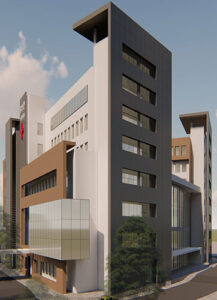
THE INDUSTRY IMPACT OF CORONAVIRUS
Effect on Real-Estate Sector
In India, the real estate sector is growing with a CAGR of 30%, making it an opportune market for investment currently. By 2040, it is predicted that the Indian real estate market will grow to Rs. 65,000 crore (US$ 9.30 billion) from Rs. 12,000 crore (US$ 1.72 billion) in 2019. The real estate sector in India is expected to reach a market size of US$ 1 trillion by 2030 from US$ 120 billion in 2017 and contribute 13% to the country’s GDP by 2025. Retail, hospitality, and commercial real estate are also growing significantly, providing the much-needed infrastructure for India’s growing needs.
As per ICRA estimates (an Indian independent and professional investment information and credit rating agency), Indian firms are expected to raise more than Rs. 3.5 trillion (US$ 48 billion) through infrastructure and real estate investment trusts in 2022, as compared with raised funds worth US$ 29 billion to date.
HOUSING MARKET
The pandemic dealt a major shock to the housing market with prospective buyers postponing their purchase decisions. However, the situation has improved since May 2021. As per a report on the Indian Real-estate industry by IBEF, housing launches were 86,139 units across the top eight Indian cities in the second half of 2020. Home sales volume across eight major cities in India jumped by two times to 61,593 units from October 2020 to December 2020, compared with 33,403 units in the previous quarter, signifying healthy recovery was observed post the strict lockdown imposed in the second quarter.
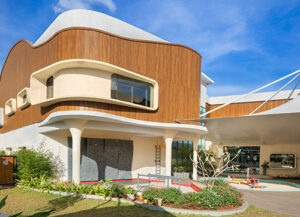
Various industry bodies have predicted trends of 35%-40% growth in both new launches as well as sales in this end quarter of the year 2021. Data shows, as many as 24,600 units were sold across the top seven cities in Q2 2021, while 36,250 units were launched in the same quarter. While there is still a long way to go, the worst is behind for the residential segment. A combination of favorable factors such as low mortgage rates, stable prices, and flexible payment plans of developers make this an appropriate time for buyers to strike a good deal.
The government of India along with the governments of respective states has taken several initiatives to encourage development in the sector. The Smart City Project, with a plan to build 100 smart cities, is a prime opportunity for real estate companies. The residential sector is expected to grow significantly, with the central government aiming to build 20 million affordable houses in urban areas across the country by 2022, under the ambitious Pradhan Mantri Awas Yojana (PMAY) scheme of the Union Ministry of Housing and Urban Affairs. Expected growth in the number of housing units in urban areas will increase the demand for commercial and retail office space.

Let’s look at the market for various products which go into building façades and fenestrations.
Business & Market for Various Architectural Cladding Materials:

Founder, Alucomet Fabricators
We spoke to Atharva Moroney, Founder, ALUCOMÉT Fabricators, on the architectural glass/cladding materials business and market for various architectural cladding materials in 2020-2021. According to him, the architectural cladding material business has grown by multi-folds in the past 5-6 years, but as per his belief, it is probably the only area in the façade industry that has seen tough competition in terms of technical aspects, aesthetic appeal and finally – war zone like commercial pricing. Earlier, it was predominantly only the ACP sheets that used to govern the actual façade and cladding market. “I believe I had read in some article wherein if I recollect the figures. The share of ACP cladding alone was around 3000 Crores. But gradually over the period, the architects who are also considered as the ‘Captain of the ship’, which in other words in nothing but the ‘Project’ itself, decided to experiment with other cladding materials. Thus they started testing their hands with elements like Metal claddings, Zinc, Copper and Corten claddings, etc., and then eventually even stone claddings were brought into use on a very large scale,” says Moroney.
According to Dr. Prashanth Reddy, Managing Director, FunderMax India Pvt. Ltd., the overall façade and cladding market is at an estimated 100 million square meters. The growth rate in the past was at 12-18% and the demand is rising because of an increase in awareness about cladding, not only for aesthetic but also for functional values.


India Pvt. Ltd.
The cladding market is quite mature now and is filled with options that are new and innovative. In the past, glass, stone, wood, metal/ACP has always been the traditional choice of material for exterior cladding. Reddy also observes that materials such as exterior grade laminates, (as per EN438-6), Fiber Reinforced Concrete, Metal Claddings (Zinc, Copper, and Steel) are more preferred by the clients.
The Market For Brick/ Clay Building Material Solutions
The Indian housing sector is set to undergo a momentary phase of trouble but looks to emerge stronger as we step into a post- Covid world. With the increase in construction requirement and factors such as fast-depleting natural resources, achievement of Sustainable Development Goals (SDGs) & international commitments to reduce carbon footprints, the Government of India’s Ministry of Housing & Urban Affairs recognizes that there is an urgent need to find a substitute for energy-intensive building materials and minimize the use of scarce natural materials.
India is expected to witness strong growth in the green building sector with increased awareness and demand for green building materials in residential projects, states Muthu Kumaran, Deputy General Manager, Head – Façade & Roof Division, New Market Development, Wienerberger India. On the demand side, there’s expected to be an increase due to pent-up demand bolstered by the accelerated pace of vaccination. The growing need for home ownership and slow momentum gained in employment is driving housing demand. Energy-efficient homes are gaining traction and the concept has a dominant influence on the minds of prospective home buyers, adds Muthu Kumaran.

Deputy General Manager, Head – Façade & Roof Division, New Market Development,
Wienerberger India
In the clay ventilated façade tiles for cladding, there’s a perennial need for a timeless modern façade with the distinctive character of natural clay. The organized construction market has remarkably used this opportunity to create a signature style element for their design ethos by experimenting with façade materials that define their offerings. In the modern context, a building must be sustainable, energy-efficient and each architectural design must offer a benefit. Especially when it comes to smart cities, the buildings must project a sense of intelligent design to abide by the overall city planning.
The Upvc/Aluminium/Metal/ Wood Fenestration Business

Covid -19 had its own repercussions and that was felt in the fenestration industry as well. When the markets opened there was a surge in demand, says Dr.h.c Mario Schmidt, Managing Director, Lingel Windows, and Doors Technologies Private Limited. This lead to a shortage of raw material and a surge in the price of raw material was witnessed. Needleless to say, the cost to hire skilled workers also rose as many had left for their villages, says Schmidt. “We saw a real need for customers to invest in good quality products and services and the demand for Aluminium rose compared to uPVC. This inflation in the raw material is currently a concern which we are hoping will be controlled,” he hopes.
Nikhil Jain, Director, The Rishabh Wipro Pvt Ltd adds that with the increased time spent by people in home during Covid times, the manufacturers have witnessed the increased need for good performance doors and windows from consumers. They want elements that increase light, reduce noise, heat, pollution with no air leakages, and are long-lasting and easy to operate. Ultra-premium customers are inclined towards aluminum doors and windows with even thermally broken and premium finishes like wood, bronze, copper finish, whilst premium and economy customers are moving towards uPVC and not just white but also with foiled lamination, observes Jain.

According to Pulin S Rajyagor, PVC Business Head, Reliance Industries, the Indian uPVC window & door industry is poised to a high growth trajectory. This industry is closely linked with the infrastructure sector and Indian infrastructure growth potential is beyond any doubt. The acceptability of the uPVC window & door and façade market is going to augment due to various technical superiority, low maintenance, and design flexibility. However, the penetration level of uPVC in India is very low and that is why there is ample opportunity to grow. Moreover, the Prime minister’s vocal for local and self-reliance stand would catalyze Indian manufacturing activities and infrastructure would be one of the most promising ones, Rajyagor is optimistic.

PVC Business Head, Reliance Industries
The Market for Architectural Hardware
After 18 months of Pandemic, clouds of uncertainty have started disappearing complimented by the fastest vaccination drive. The architectural hardware industry has also witnessed a steep rise in transport & raw material costs such as aluminum, steel, etc.
“Although most of the hardware companies have been successful in not passing the entire burden to end clients and keeping the pace of the project going with a marginal increase in hardware budgets, leading to clients getting more inclined towards working with the organized hardware companies, observes Hemant Kathuria, Director – Triton Overseas.
A lot of people took the slowdown as an opportunity to renovate their existing properties (mostly seen in the hospitality sector), thereby creating strong demand for architectural hardware. We have also witnessed the increased usage of luxury hardware in the middle to high-end residences in the past few months, adds Kathuria.

Architecture Business During Pandemic and Beyond
Every fall comes with a rise…
The architecture & design industry, much like any other service industry, came under severe pressure and hurdles during the pandemic. With projects delayed, new leads on a standstill, and clients pulling back budgets, the only mantra that resonated with independent design studios was ‘Survive and then Revive’. Issues from every facet of the business such as tight finances, retaining team strength, increased infrastructure costs, and low project inflows plagued the industry.
However, with this grim situation came new realizations and opportunities. We witnessed the strength of our team, who managed to get projects executed and completed even during the tough lockdown period.
Also, this was a period of reflection among the design industry and many clientele as well. A sense of pause helped us to reimagine what the spaces of tomorrow should offer. As people, lifestyles and interests underwent a drastic change, spaces needed to adapt to this new normal, and with it came a sense of exploration and innovation in architecture and interior design. New sensibilities and empathy are crucial to public spaces today, including retail environments, that make people feel safe and comfortable.

MD & Co-Founder,
FRDC
With the period of new learning and hardship, we were able to cross the turbulent second wave this year. Soon, new leads and the projects on hold started to come in and progressively increased. However, there is a sense of caution among clients and with it the tight budgets and timelines. We feel that the time of revival is kicking in and are confident that this upward climb is here to stay. It’s definitely an interesting time to witness the ‘revolution’ in the design industry and be part of it.
The Future Outlook
Let’s see how the architectural cladding industry will progress in this decade and the factors which will drive the industry’s growth.
CLADDING INDUSTRY
Dr. Prashanth Reddy from FunderMax India Pvt. Ltd., is definite that sustainability is going to be the buzz in the coming decade. Most projects would seek green-certified products. This will significantly increase the market demand for efficient cladding materials & systems such as exterior grade laminates and their use in the revolutionary rear ventilated façade system. For instance, in this case, the differentiating advantage of exterior grade laminates is eco-friendliness, thermal efficiency, energy renewability, and sustainability.
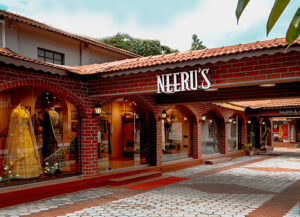
Atharva Moroney, from ALUCOMÉT Fabricators, agrees with Reddy. According to Moroney, this decade will be witnessing some outstanding and excellent out-of-the-box material finishes, which would be introduced to the market. “As far as I believe by observing the trend in which the cladding industry is inclined, the conventionally used aluminum composite panel sheets are seen to be replaced by actual metal sheets. The traditional stone cladding which adds to the weight of the main structure due to its weight and density is seen to be replaced by lighter and long-lasting honeycomb panels and minimalistic thicknesses of compressed porcelain slabs which will be thinner than 05mm in thickness, “predicts Moroney.
Moroney adds that he is in touch with some outstanding technocrats of the manufacturing industry and they seem to have a totally different vision towards the façade and cladding material industry. At the same time, companies are talking about engineered stones and engineered wood, which shall have all the properties (Mechanical & Physical) same as the natural materials but with an enhanced range of properties and shelf life. Also, very importantly, we as a part of the process are talking about emerging as a cleaner and greener industry with lesser carbon footprints left behind during the production of these materials we are dreaming about to take up the skyline of our cities.

Clay As A Cladding Material – Trend & Industry Outlook
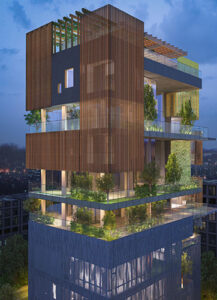
The cladding segment is also witnessing growth albeit at a slower pace, considering the slowdown in commercial construction. Architects prefer natural products with longevity complementing glass & other modern materials. The widespread adoption of natural cladding materials not just in commercial spaces but also in IT parks, public utilities, and hospitality would be the key drivers for growth. The renovation market also holds promise in cladding as we have seen an uptick where existing structures with ACP are moving towards cladding them with clay façade tiles. Resource-efficient clay bricks can significantly address many of the growing needs for green building materials and also cater to the demand from the single-family homes in Tier 1 and Tier 2 cities, says Muthu Kumaran from Wienerberger India. Lightweight & green products are increasingly gaining acceptance. Developers are showing a growing interest in attaining LEED (Green) ratings for their projects. “We see a huge potential in the cladding & roofing segment as well for the clay building as the market preferences are changing post-Covid and preference for villa and individual home projects are increasing. This trend is particularly common in South India. Our tropical climate demands a pitched roof in this segment. New flat roof tiles designs are a preferred choice for contemporary design,” adds Muthu talking about the trends.
The Future Of The Fenestration Industry
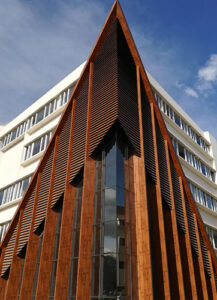
It is rather difficult to predict what this decade would look like and if businesses will adjust to the new normal like it is doing now. The future seems fine as long as there the situation is under control. Price rise can be expected in the near future to maintain stability, warns Dr.h.c Mario Schmidt from Lingel. The future of this industry will be safe if it maintains and safeguards the standards for the products, points out Mario. Keeping in mind the Glasglow conference, he adds, it is the need of the hour to have eco-friendly products. It has already been agreed at COP26 where more than 100 world leaders have promised to tackle deforestation, and the industry must work in the same direction for the future, advises Mario. He recommends standard, sustainable quality products.
Doors and windows have great importance in the minds of the consumer while planning for a new house or renovating the existing buildings. According to Nikhil Jain, the demand for performance with emphasis on tested systems is also going to rise. The shift from simple sliders or casements to solution-oriented products like Lift n Slides, Fold n Slide, Tilt n Turn will also gain prominence. Reliability & sturdy performance with solid warranties and after-sales service support will be key for success in the future of the fenestration industry. Innovative finishes and options both in Aluminium & uPVC will be exciting for the consumer.
Infrastructure development is the barometer of any country’s economic health and India is no exception. Govt. of India has been pushing for infrastructure development for many years and would continue to do that in several decades. With that thrust and PVC being a truly infrastructure material, the future of PVC and uPVC windows remains bright, adds Rajyagor from Reliance Industries.

From a sustainability aspect, uPVC is nearly unmatched. uPVC is a perfectly sustainable building material being 100% recyclable and having the lowest embodied energy when compared to other popular building materials like steel and aluminum. uPVC windows help in conserving energy and are long-lasting to the tune of the life of the building adds Rajyagor. Although uPVC windows and doors are relatively expensive than traditional materials, demand for the same is gaining momentum and would continue to get the tailwind. Consumers started taking a holistic view of the overall benefit rather than looking at only price.
The Future Outlook For The Architectural Hardware Industry
Architectural Hardware Industry, being strongly influenced by architects & interior designers, is already going through a transformation with the strong demand being created for Niche & Exclusive Products, states Nageswara Reddy, MD – Triton Hardware Pvt. Ltd. There is a need to continuously innovate and introduce latest technology products into the market to meet the demands of unique and long-lasting products.
“Off late the clients are getting more aware of hardware functioning and are careful in selecting the right hardware for their spaces. They also evaluate the quality being offered very cautiously and don’t mind shelling some extra bucks to get a superior quality product considering the Long term advantage,” explains Reddy. Future belongs to the hardware companies which will perform consistently on the product quality, innovation, availability & service, he concludes.
CONCLUSION
The prospects for the façade and fenestration industry in the immediate term remain relatively good, although a volatile economy casts some uncertainty over short-term prospects.
The performance of the façade/ fenestration industry would be proportionate to the performance of the Indian real-estate sector. The Securities and Exchange Board of India (SEBI) has given its approval for the Real Estate Investment Trust (REIT) platform, which will allow all kinds of investors to invest in the Indian real estate market. It would create an opportunity worth Rs. 1.25 trillion (US$ 19.65 billion) in the Indian market in the coming years.
The residential sector is expected to grow significantly, with the central government aiming to build 20 million affordable houses in urban areas across the country by 2022, under the ambitious Pradhan Mantri Awas Yojana (PMAY) scheme of the Union Ministry of Housing and Urban Affairs. Expected growth in the number of housing units in urban areas will increase the demand for commercial and retail office space.
Based on the comments from all the industry leaders and reports, we can come to an inference that the Indian Window, door, and façade market would vroom again if the manufacturers stress maintaining quality, testing, certification while advancing technologies including digitalization and sticking on to sustainability priorities.
